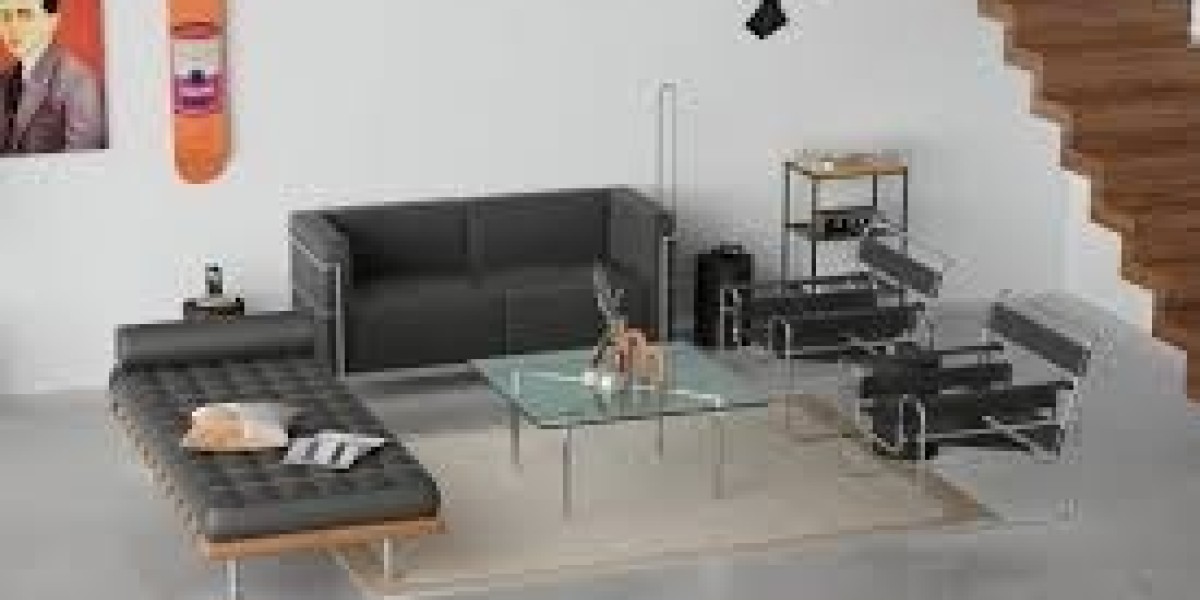When it comes to crafting the perfect interior space, furniture plays a more important role than many realize. It’s not just about filling a room with beautiful pieces—it’s about choosing the right furniture that complements your design style and enhances the overall look and feel of your home. Whether you're drawn to minimalistic aesthetics or bold and eclectic designs, matching furniture to your interior style is key to achieving a cohesive and well-balanced home environment.
The journey begins with a clear understanding of your chosen design style. Each interior design approach comes with its own set of elements, and the furniture you select should align with those principles. From the clean lines of Scandinavian interiors to the warm, rustic charm of farmhouse style, furniture acts as both the foundation and the finishing touch that ties the entire space together.
Understanding Your Interior Design Style
Before diving into furniture selection, it’s essential to define your interior design style. Are you someone who appreciates the simplicity of modern design, or do you prefer the ornate details of traditional décor? Your interior style reflects your personality, lifestyle, and aesthetic preferences. Understanding it is the first step in ensuring your furniture choices feel intentional rather than accidental.
Modern interiors favor sleek lines, neutral color palettes, and functional furniture with minimal embellishments. In contrast, traditional design leans toward classic silhouettes, rich wood finishes, and decorative detailing. Then there’s the transitional style—a blend of the two—offering the comfort of traditional design with the clean simplicity of modern trends. Knowing which of these categories you identify with will help you choose pieces that seamlessly integrate into your space.
The Role of Furniture in Design Harmony
Furniture is more than just a place to sit or store items—it sets the tone for the room. A mismatched sofa or an oversized coffee table can throw off the entire balance of a space. On the other hand, the right piece can elevate the room's atmosphere, making it more inviting, functional, and visually pleasing.
Think of your furniture as the backbone of your home’s interior. Every piece should serve a purpose while also contributing to the visual narrative of the room. This doesn’t mean every item must match perfectly; rather, they should complement one another and reinforce your style. A minimalist space doesn’t need to feel cold if you incorporate warm wood tones and soft textiles. Likewise, a traditional room can feel fresh and updated with the inclusion of contemporary accent chairs or modern lighting.
Material Matters: Choosing the Right Finishes
Material and texture play a critical role in tying your furniture to your interior design style. For example, leather and metal finishes often suit industrial or contemporary settings, while soft upholstery and distressed wood work better in rustic or farmhouse-style homes. Velvet, linen, glass, wood—each material carries a different weight and emotional feel.
Consistency in finishes helps maintain flow throughout your space. If your home follows a coastal design theme, light-colored woods, rattan furniture, and breezy fabrics like cotton and linen are ideal. Meanwhile, a glam interior might call for polished metals, mirrored surfaces, and plush textiles like velvet and silk.
When selecting furniture, pay close attention to the materials used. Not only do they impact the aesthetic, but they also determine how durable and practical the pieces will be over time, especially in high-traffic areas such as the living room or dining space.
Online Shopping and Design Integration
Thanks to the convenience of e-commerce, finding furniture that matches your design style has never been easier. Online furniture stores in Pakistan now offer a wide range of collections tailored to every aesthetic—from classic to contemporary, minimalist to boho-chic. These platforms allow you to browse through curated looks, compare pieces, and find inspiration that matches your taste, all from the comfort of your home.
When shopping online, however, it’s important to stay grounded in your design goals. With so many attractive options available, it’s easy to get swayed by a beautiful piece that may not work with your existing décor. Before making a purchase, consider how the item will blend with your current furnishings in terms of style, color, scale, and material. Many online retailers provide virtual room planners or AR previews, which can be immensely helpful in visualizing the final result.
Matching Furniture to Popular Design Styles
Let’s take a closer look at how furniture choices can align with specific design styles.
In Scandinavian interiors, you’ll want to look for pieces that are clean, minimal, and highly functional. Think light wood furniture, tapered legs, and neutral tones. These items should offer comfort without unnecessary detail and should allow for open, airy arrangements.
If your style leans toward industrial, consider furniture with raw finishes, exposed metal frameworks, and reclaimed wood. Pieces should feel rugged yet refined, giving the space a sense of edgy sophistication.
For a more traditional or vintage look, opt for furniture with carved details, ornate legs, and rich finishes like mahogany or cherry wood. Upholstery in classic patterns such as damask, floral, or plaid can also add depth to the design.
Bohemian style, on the other hand, embraces eclecticism. Here, you can experiment with unique furniture pieces in vibrant colors, ethnic prints, or unconventional shapes. Mismatched chairs, rattan benches, or hand-painted side tables add to the charm of this expressive and free-spirited style.
Balancing Function and Aesthetics
Style is important, but so is functionality. Matching furniture to your interior design doesn't mean compromising on usability. It’s crucial to assess your lifestyle and choose pieces that enhance daily living. If you have a large family or entertain often, a sectional sofa or an extendable dining table might be more appropriate than compact alternatives, regardless of how stylish the latter might be.
Try to strike a balance between aesthetic and function. A coffee table with hidden storage can keep clutter at bay in a modern space, while a beautifully upholstered bench can double as seating and storage in a transitional room. This thoughtful approach ensures that your furniture not only looks good but also works hard for your needs.
Creating Visual Flow from Room to Room
Cohesiveness is one of the most overlooked aspects of interior design. While each room can have its own character, there should be a visual thread that runs through the entire house. This could be a consistent color palette, repeating materials, or a common design motif. Furniture plays a huge role in creating this continuity.
Try to avoid abrupt style changes from one room to another. For instance, if your living room is modern and minimal, it might feel jarring to walk into a dining room that’s overly traditional or ornate. Even when experimenting with different styles in different areas, use furniture to tie them together—perhaps through shared materials, color schemes, or shapes.
Personal Touches Make the Difference
Finally, remember that while following design principles is helpful, your home should ultimately reflect your personality. Customizing or accessorizing your furniture with cushions, throws, or accent pieces can help personalize your space without compromising its overall style. Don’t be afraid to blend eras or experiment within reason—often, it’s those unexpected combinations that make a space feel uniquely yours.
Interior design is not about perfection; it’s about comfort, beauty, and self-expression. Whether you're browsing showrooms or scrolling through online catalogs, let your choices be guided not only by design theory but also by how each piece makes you feel.
Conclusion
Matching furniture with your interior design style is both an art and a science. It requires a balance of aesthetic judgment, practical considerations, and a touch of personal flair. By understanding your design preferences, choosing complementary materials, and shopping mindfully—especially with the wide variety available at online furniture stores in Pakistan—you can create a home that feels both stylish and soulful.






